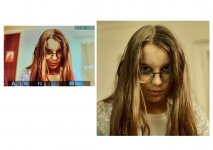- Messages
- 47
- Name
- Pierre
- Edit My Images
- Yes
Yesterday, I took a Halloween portrait and the Z 9's eye recognition function did find my model's left eye (please see attached picture). However, when I checked the picture, I saw that, actually, the focus wasn't on the eye, it was about an inch too close.
After this shot, I switched to the old-school single-point autofocus mode and everything went well, but I'd like to use the eye recognition function. Do you know why it didn't work?

After this shot, I switched to the old-school single-point autofocus mode and everything went well, but I'd like to use the eye recognition function. Do you know why it didn't work?

